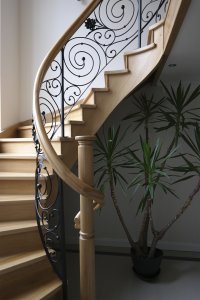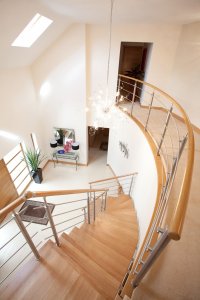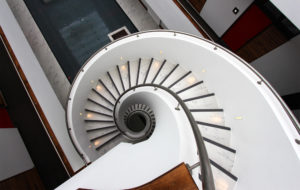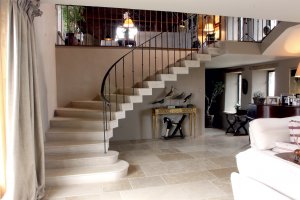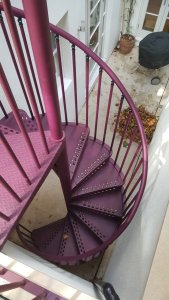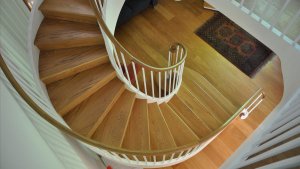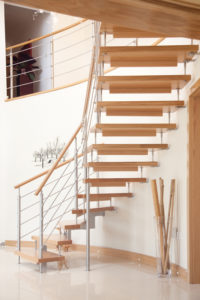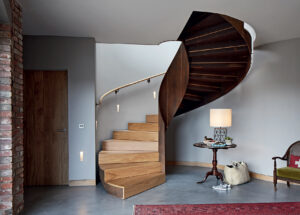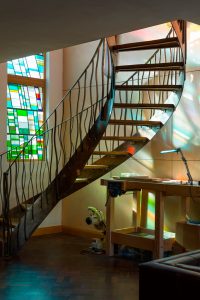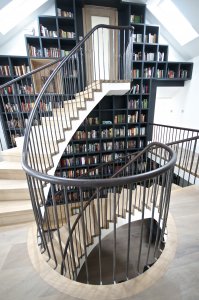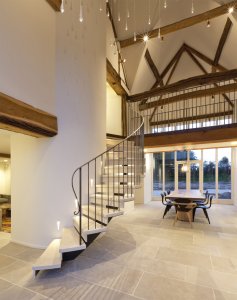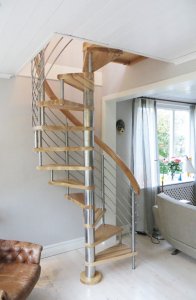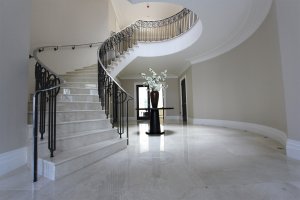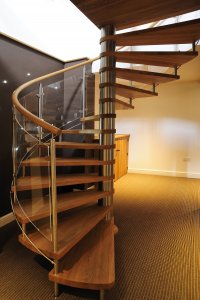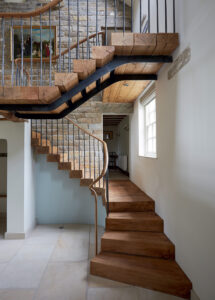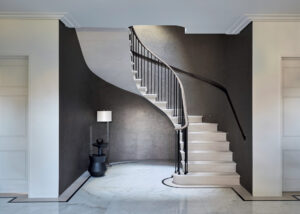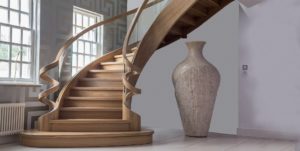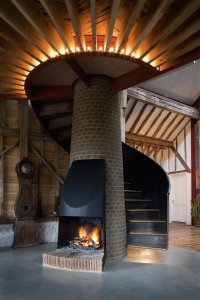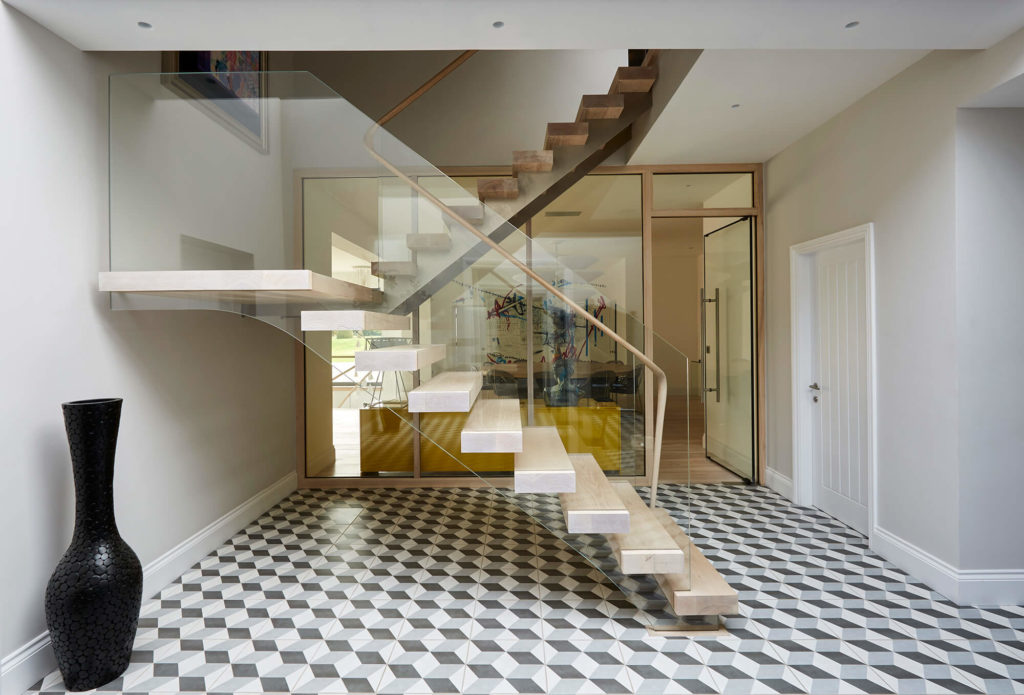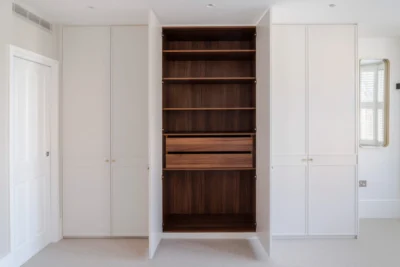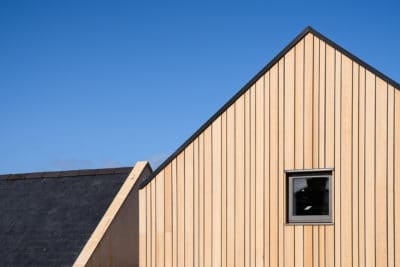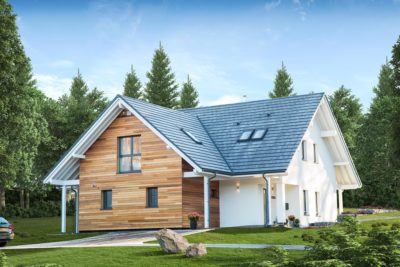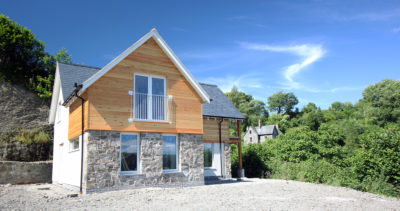How to Choose a Spiral Staircase or Helical Design
Your home’s staircase is likely to make a huge impression on arriving guests. A curved flight
has the potential to bring real wow factor to your house. It will create a striking focal point and add drama thanks to its sweeping contour.
Staircase design considerations
Spiral staircases are highly adaptable designs that, when planned well, can fit with an array of decorative styles – from traditional rooms to the most eccentric interiors. They are also great space-savers.
Helical staircases will need a larger area to be installed and are ideal if you prefer a luxurious look, particularly when clad in high-end materials such as stone.
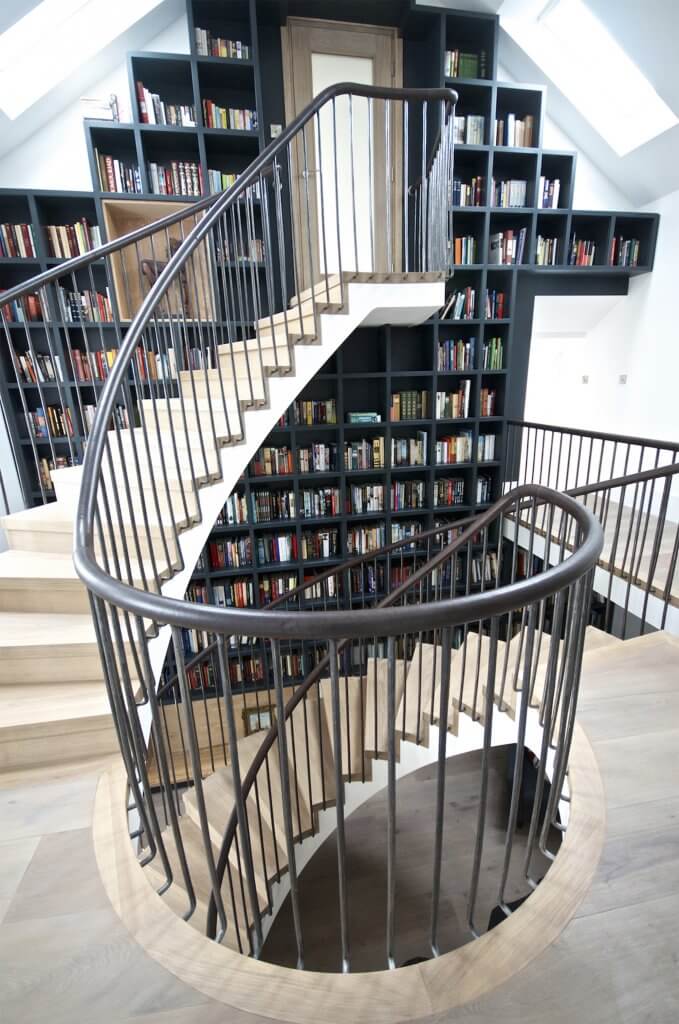
Bisca created this multi-flight helical staircase featuring oak threads and risers with steel balustrades. This design maximises natural light flooding through the storeys
It’s paramount that you plan your staircase design from the get-go. You and your design team will need to envision the impact your staircase will have on each storey. It’s also key to know how the flight will be seen from different angles – particularly if you are opting for open-plan living, as it needs to fit effortlessly within the home.
Don’t forget to consider how often it will be used: is access important, for instance, and will you need enough space to move bulky furniture up and down?
Staircase materials
Your choice of materials will largely depend on your home’s interior design. Timber is usually the go-to for traditional homes, but you could paint it to give a contemporary look.
For an ultra-modern feel choose metal, such as iron balustrades for industrial-inspired decor, or treads made of toughened safety glass.
Explore stunning flights and browse our directory for specialists in staircases & joinery:
A statement railing allowing natural light to filter through will result in a truly eye-catching flight. However, you should liaise with a lighting specialist if you are choosing solid balustrading, to ensure light will bounce-off of it correctly.
Read more: Guide to choosing staircases
A pre-cast concrete staircase can be clad in an array of materials – this option is especially useful if you are planning a flight that will be used as access to upper floors for trades during the build, as you can leave the finishes to the end of the project.
How much will my staircase cost?
Costs will vary according to design and materials. For a sturdy, made-to-measure staircase, you can expect to pay from around £2,200. Bespoke flights start from around £7,500.
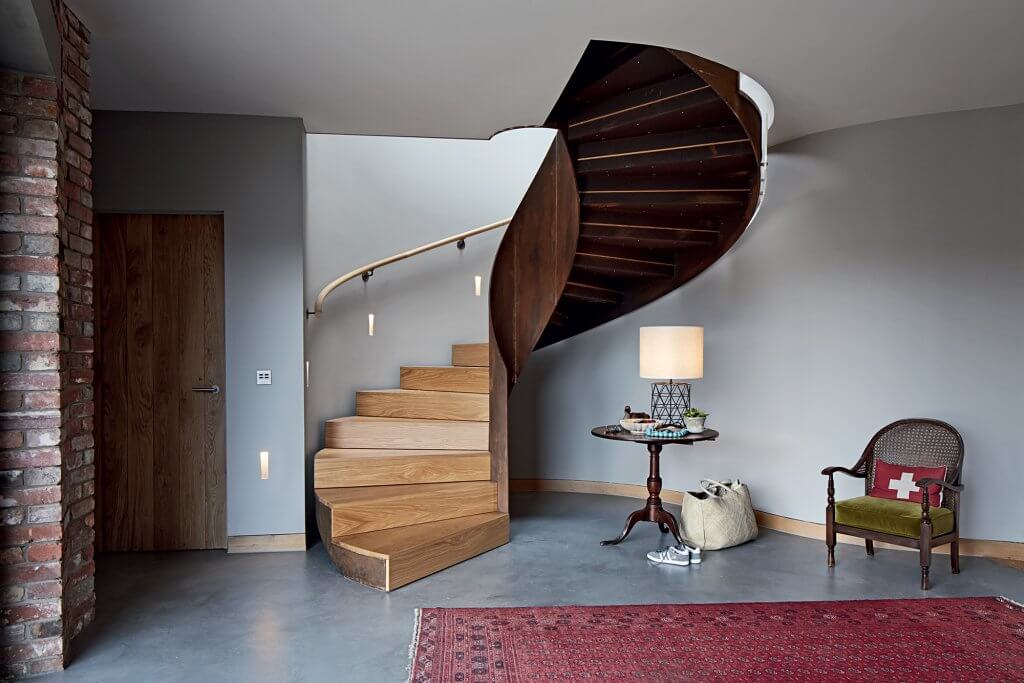
A good staircase, like this one from Spiral UK, can become a key architectural feature inside your home – setting the tone for the rest of the living space. The sky’s the limit in terms of what can be achieved (and what you’ll pay for it), but broadly-speaking there are three main cost brackets, starting with the kit route, ranging up to off-the-shelf and going for a bespoke design… |
Staircase design – The expert view
Vicky Rhys-Hurn, from Zakuna, answers questions about successfully incorporating a curved staircase packed with character in your home.
What is the difference between helical and spiral staircases?
Many people tend to confuse the two, referring to any curved flight as a spiral. However, helical staircases have no supporting central column, whereas spirals do.
Helical stairs are also not always circular – sometimes being square or oval in shape – but a spiral staircase’s diameter will always form a perfect circle when viewed from above.
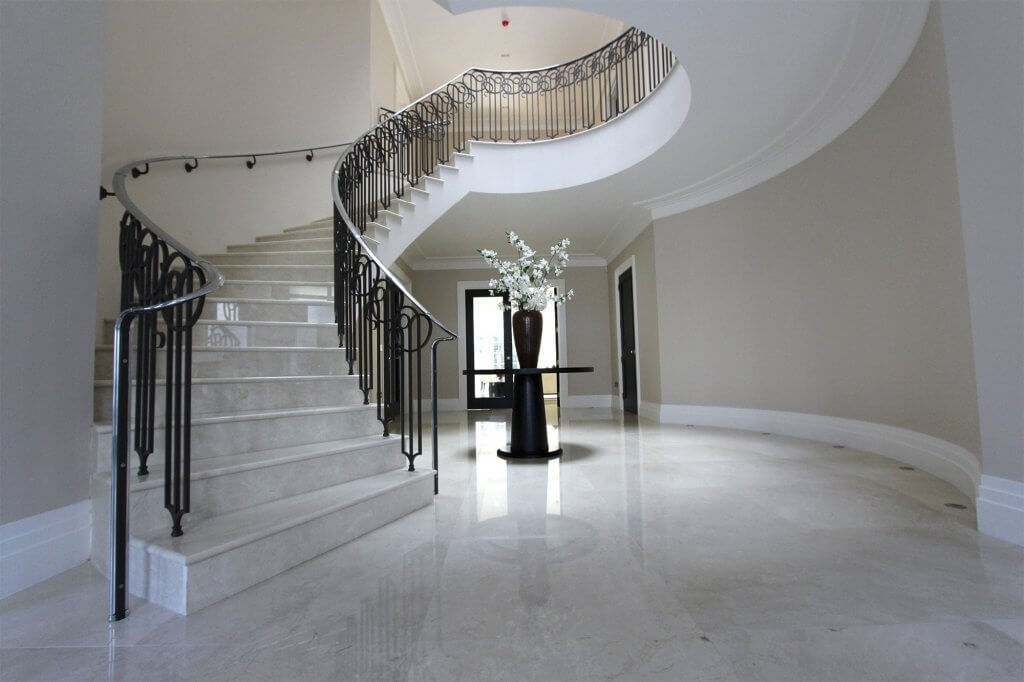
This pre-cast concrete flight was hand crafted in Kallisto’s factory. It was installed in a luxury property in Kingston upon Thames in under one day
How can I decide if I need a spiral staircase?
Which curved arrangement you choose will depend on the overall look you are trying to achieve.
You have to think about the symmetry in the room, the space available on each storey, lighting and, of course, budget. Each of these elements will factor into the final product.
When should I call a staircase designer?
Engaging with a staircase designer from the outset is the only way to ensure you accomplish the look you had originally envisioned – you’ll want the flight to be the central focus of the overall design.
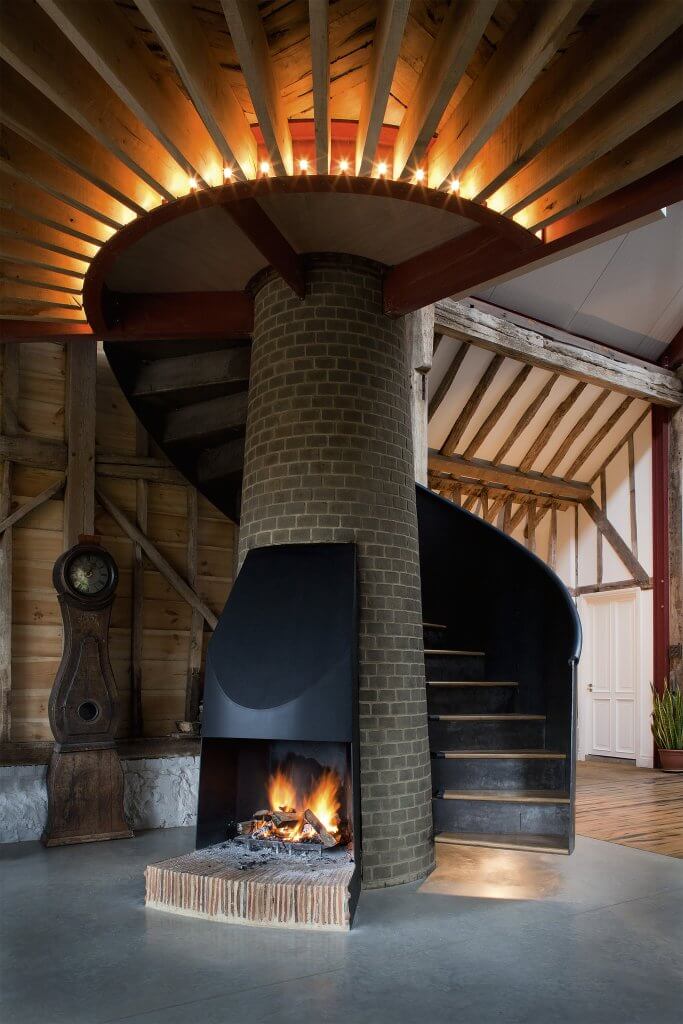
Architects Liddicoat & Goldhill designed a steel staircase to wrap around the existing brick chimney in this converted agricultural building. The flight leads up to a mezzanine bedroom while adding wow factor to the living area
Self builders and renovators often leave this element as an afterthought, which ultimately leads to a compromised result.
If you don’t plan accordingly, you may find there isn’t enough space for the model you wanted, or that your preferred materials simply don’t fit with the rest of the house.
Factoring in underfloor heating is key, so that no piping is laid where the landing will be.
Where does a spiral staircase fit best in the home?
Spiral staircases work great when space is limited. They are often used for access to lofts or for connecting to upper storeys in homes where internal floor area is precious.
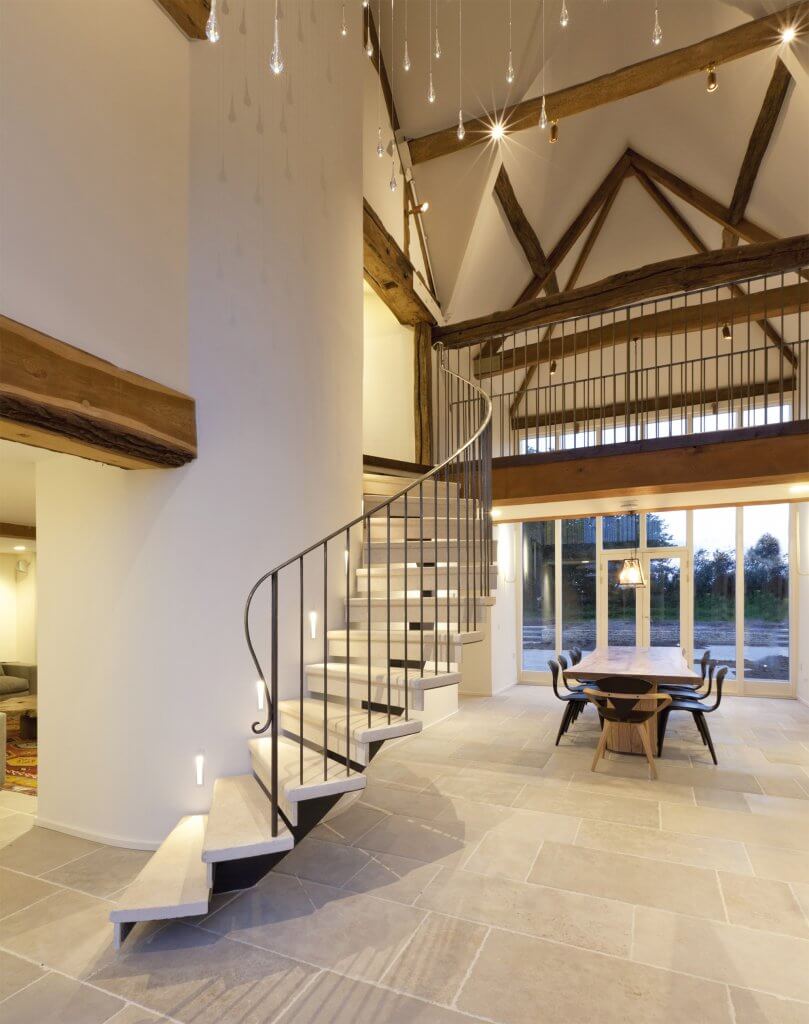
An open riser flight makes for a focal feature in this barn conversion by Studio Mark Ruthven. The helical staircase wraps around a historic column
in the atrium – which features a double-height ceiling – and connects the ground floor to a bridge on the upper storey
However, a spiral staircase can completely transform your interiors and make for a stunning addition to an open-plan living room – don’t forget the radius can be customised accordingly to achieve comfortable flights.
Wow Factor Design: Cantilevered StaircasesDesigns range from minimalist open treads (gaps between the steps) with glass balustrades that are barely visible, through to solid structures that wind upwards, topped with elaborate handrails for extra flourish. The right design for you will depend on the style of your house, the space available and if you’re able to put the appropriate supports in the adjacent wall…. |
Exterior spiral staircases are popular, too, as they allow you to access other levels without compromising on garden space. These are often found next to outbuildings and terraces.
Helical designs, on the other hand, take up more floor plan. They are most suitable for entrance halls, where they will bring real wow factor to impress visitors.
What materials suit these types of flight?
Whether you are installing a spiral or helical staircase, the choice of materials comes down to the overall decor in your home.
The good news is that, when you engage with a specialist designer, you’ll be able to play around with your ideas and create a truly bespoke feature.
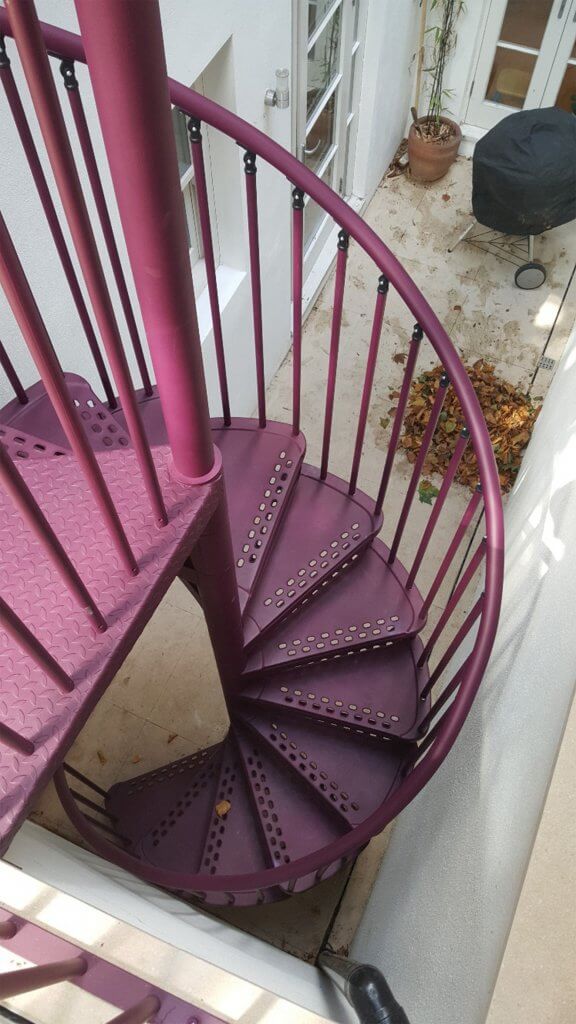
This external spiral staircase in galvanised steel is by Stairs Direct. The flight and landing are customisable and available in a choice of RAL colours
For instance, at Zakuna we offer unusual methods of supporting the structure, such as stainless steel ribbon stringers or glass panels. You can also opt for wood, steel or glass treads to complement the setting.
However, you should choose your balustrade carefully, as your selection of clear, opaque or solid railing can make or break the overall look. This is where illumination plays a key role, as you may need spindle railings to let light through.
Top image: Spiral staircase in concrete by Kallisto
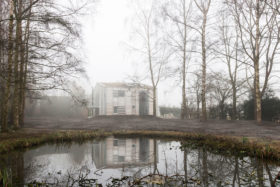
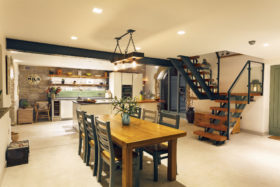































































































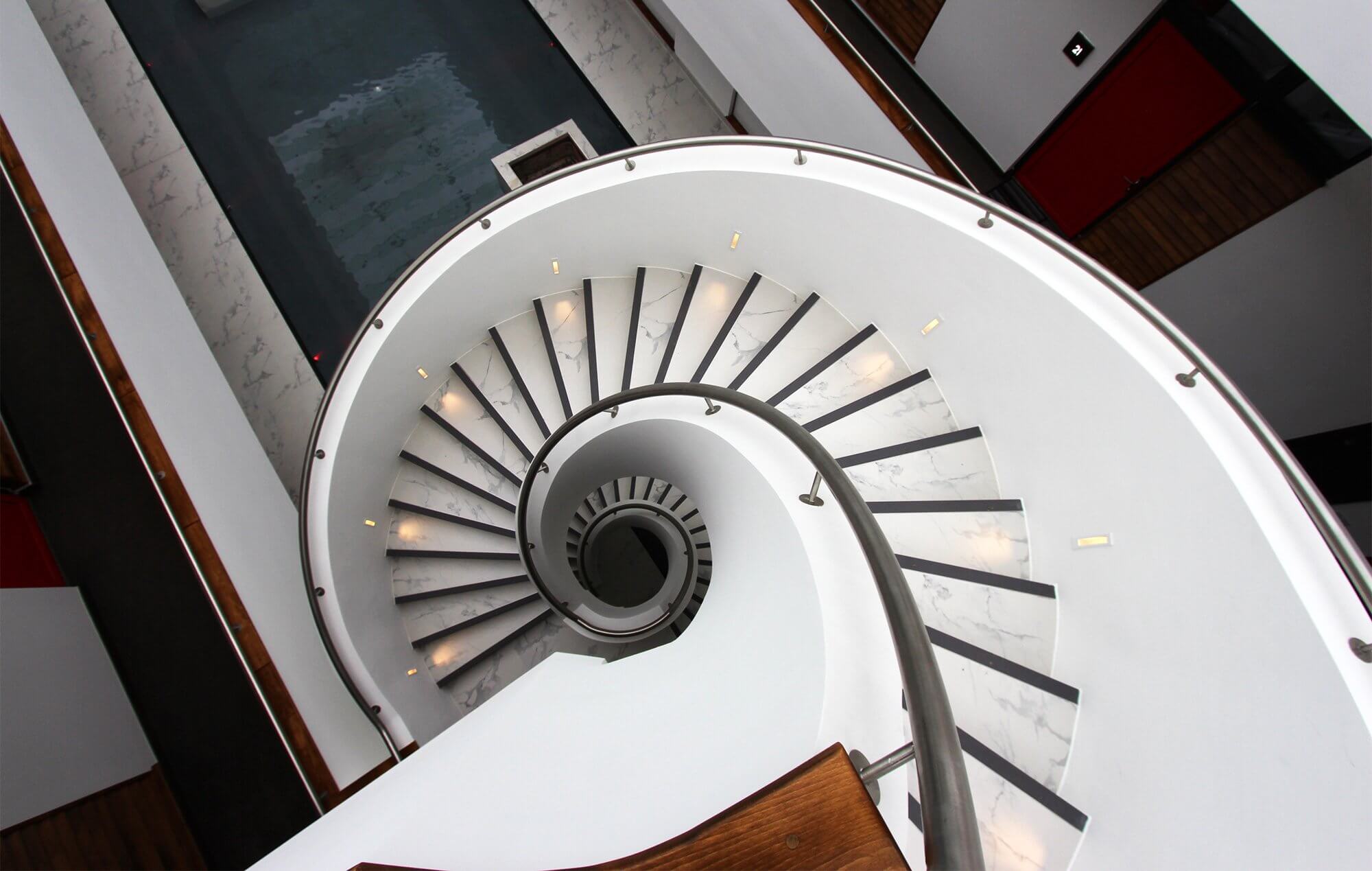
 Login/register to save Article for later
Login/register to save Article for later

